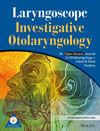Reflux disease and congenital laryngomalacia in neonates: A Kids' Inpatient Database analysis
Abstract
Objectives
Congenital laryngomalacia (CLM) is the most common cause of stridor in neonates and is commonly associated with reflux disease (RD) such as gastroesophageal reflux and newborn esophageal reflux. This study investigates the impact of RD on the management and outcomes of neonates with CLM.
Methods
The 2016 Kids' Inpatient Database (KID) was queried for neonates with CLM (ICD-10: Q31.5). RD status, procedures, and complications were identified with ICD-10 codes. Univariate and multivariable analyses were implemented to determine statistical associations.
Results
Of 2212 neonates identified with CLM, 585 (26.45%) had RD. Patients with RD were more often female (p = .038) and premature (p < .001). Upon multivariable analysis, patients with RD had greater total charges (Mean $457,810.87 vs. $259,020.90, p < .001) and longer length of stay (Mean 46.03 vs. 26.44 days, p < .001). Those with RD had more diagnoses recorded (Mean 14.15 vs. 9.66, p < .001), underwent more procedures (Mean 5.47 vs. 3.49, p < .001), and had a longer wait until their first procedure (Mean 13.27 vs. 7.02 days, p < .001). Patients with RD had increased odds for undergoing laryngoscopy (OR 1.799, 95% CI 1.382–2.321, p < .001), bronchoscopy (OR 2.179, 95% CI 1.598–2.801, p < .001), and ventilator use (OR 1.526, 95% CI 1.197–1.886, p < .001) on multivariable regression adjusting for patient demographics, hospital characteristics, and comorbidities. Patients with and without RD had similar odds for undergoing tracheotomy (OR 1.540, 95% CI 0.934–2.522, p = .088) and mortality (OR 1.084, 95% CI 0.397–2.646, p = .874).
Conclusion
CLM is a common diagnosis in neonates that is associated with RD. In our cohort of neonates with CLM, those with RD had overall poorer outcomes.
Level of evidence
4.

 求助内容:
求助内容: 应助结果提醒方式:
应助结果提醒方式:


